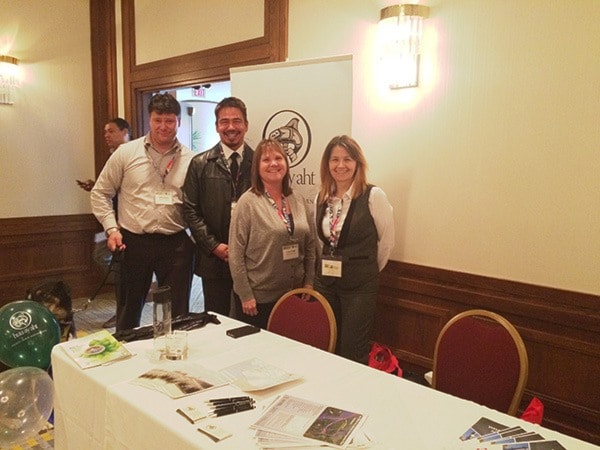The Huu-ay-aht First Nation have a lot of things on the go—and that’s the way Huu-ay-aht First Nation Councillor Trevor Cootes likes it.
“There’s about six opportunities we’re working on right now that can really change the landscape of what our business looks like,” said Cootes.
The Huu-ay-aht’s recent surge of economic development isn’t unusual if compared on a national level.
Cootes attended the Council for the Advancement of Native Development Officers conference in Toronto at the end of October and got a chance to learn about what other nations across the country were doing.
“A lot of the delegates that were there were economic development officers, executive directors and business operators,” he said.
“The one common theme is that a lot of first nations are trying to take on their economic development.”
But while many are trying, the Huu-ay-aht’s circumstances make it a little bit easier.
They became a treaty nation four years ago under the Maa-Nulth First Nations Treaty (along with the Uchucklesaht, Ucluelet, Toquaht and Ka:’yu:’k’t’h/Che:k’tles7et’h’.
With that, the Huu-ay-aht got control over their finances and operations.
Non-treaty nations or treaty nations that signed 200–300 years ago are all governed by Indigenous and Northern Affairs Canada; self-governing nations like the Huu-ay-aht control their own economic development.
“It’s easier to spend money, it’s easier to make decisions, it’s easier to build business,” Cootes said.
They’ve started that already by partnering with Vancouver-based Steelhead LNG on a proposed $30 billion LNG facility at Sarita Bay. (see a timeline of that project here)
The 24-million-tonnes per year facility would be located on Huu-ay-aht land up the Alberni Inlet, approximately 10 kilometres north of Bamfield.
The Huu-ay-aht and Steelhead signed an agreement in July 2014 to explore the possibility of an LNG facility at Sarita Bay. At their People’s Assembly at the end of November 2014, Huu-ay-aht citizens voted in favour of continuing the project.With that, the project moved into stage 2, where it has remained since. Stage 2 consists of feasibility and environmental studies, the results of which Cootes said should be available by spring 2016.
According to Cootes, Huu-ay-aht citizens will get another chance to vote once the current studies are completed.
The LNG facility is proposed to create 3,000-4,000 jobs during its construction and 300-400 once it’s operational.
Construction won’t begin until after the final investment decision in 2018 but the Huu-ay-aht are preparing to meet the demand for workers already.
“There is a plan to offer trade-based education and training for citizens and there have been six citizens who have taken that opportunity,” Cootes said. The training so far has been to fill jobs for the construction phase.
But Cootes isn’t counting on LNG to fulfill all of the Huu-ay-ahts’ economic development goals.
“The economic plan [to be presented at the People’s Assembly] will show the short-term, mid-term and long-term goals,” he said.
“Long-term goals will definitely be something large like LNG, mid-term would be something of an overall strategy to do with forestry, tourism and fisheries. For the short term, I see tourism as the top priority.”
That would involve exploring tourism with a cultural edge—something that Cootes said other first nations in B.C. have explored with great success.
Just an hour away from Port Alberni, the Tla-o-qui-aht First Nation partnered with West Coast Wild Adventures to build a zipline park on their tribal land.
The partnership has so far included training and will eventually see the ownership of the park transferred over to the Tla-o-qui-aht.
Something in that vein could be a possibility on Huu-ay-aht land.
“There are operators in our territory that we’re looking at partnering with to offer them a better experience and at the same time give us a chance to build our cultural tourism program,” Cootes said.
A key part of that could be Kiixin—an old village designated a heritage site by the federal government.
“It’s an old summer village...it actually has remains of the old chief’s site,” he said.
“Close to the Bamfield community, on Trevor Channel.”
The Huu-ay-aht have visited the site on tours with students from the Bamfield Marine Science Centre, Cootes added.
“It’s something that we want to use as an attraction; build an interpretive centre around it and bring back half the artifacts that we have at the B.C. Museum in Victoria,” he said.
“I’ve seen amazing strides in Aboriginal growth in B.C. and the demand for cultural tourism around the world because of the art, the culture and the language.”
reporter@albernivalleynews.com
twitter.com/AlberniNews
